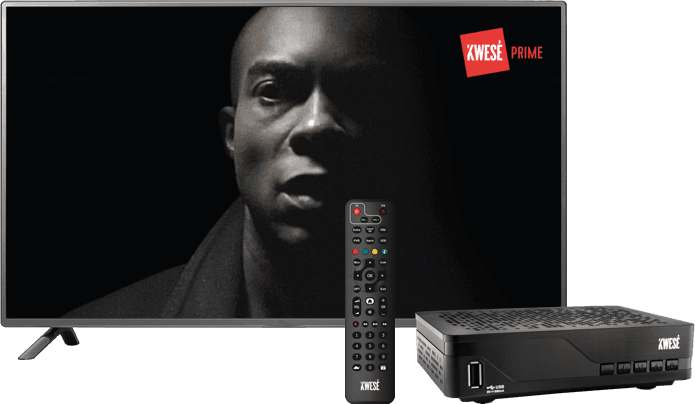Which TV should you choose? Smart or traditional? Ultra-HD or full-HD? LED or OLED? Technology is evolving so fast that it is no longer easy to navigate flat-screen TVs. We will help you choose the new television that best suits your needs!
ARE YOU TAKING YOUR SMART YEAR OR TRADITIONAL?
What kind of TV should I buy, smart or traditional? This issue is mostly decided by price, although smart TVs that run apps like YouTube are also getting cheaper. Among the manufacturers, Philips and Sony will use Google’s Android software on their new smartphones, while LG will use webOS and Samsung will use a platform called Tizen. When choosing a TV, it is almost impossible to decide which technology is better or worse than the other, however, the range of applications available for each app is not exactly the same.
Today’s smart TVs are best suited for music and video services. Although we would guess by its name, it is not possible to run all Android games and apps on Android TV, only those that have been specifically optimized for smart TV use, and this is only a fraction of all apps. But both LG and Samsung TVs have far fewer apps available than smartphones. From a smart TV, it’s a good idea to choose a model with built-in wifi, as this gives you much more freedom to place your device than if you had to adjust to the internet wire.
WHAT SHOW TV DO YOU BUY?
What resolution should I buy on my TV? Should it be Full-HD or Ultra-HD?
When buying a TV, you can choose from three resolutions: HD-ready (1366 * 768 pixels) for about 1 million, full-HD (1920 * 1080 pixels) for 2 million, and ultra-HD / 4K (3840 * 2160 pixels) already contain more than 8 million pixels. Samsung sells its premium TVs under the brand name SUHD, but they are just as ultra-HD as the others. Many TV names have the name 4K, which in common parlance indicates the same quality as ultra-HD, and suggests that the horizontal resolution of such screens is close to 4,000 pixels.
Today, basic HD-ready quality is mostly enough for just a kitchen, small bedroom TV. You should buy at least a full-HD device in your living room, or even more ultra-HD / 4K resolution, as most TV shows and movies are or will be available in this quality. When buying a TV, it is good to know that ultra-HD models are also getting cheaper. Although at such a huge resolution, they still broadcast little content, a film viewed in such a format offers a striking spectacle. On an Ultra-HD / 4K TV, you should watch at least full-HD movies. Because the resolution of ultra-HD TVs is an order of magnitude higher, which is better than what has been used so far, the picture of TV broadcasts lower than full-HD TV may be less beautiful on them. Some of the game consoles available today are not yet capable of running games in ultra-HD resolution, but these are also expected to become more widespread. While this is currently the case, the future is for ultra-HD resolution, including 4K / ultra-HD TVs, and if you are thinking about buying a TV in the long run, you may want to choose this type.
HOW MUCH DO YOU TAKE YOUR TV?
If the device will be placed in a small bedroom and you will be looking up close, a 32-38 inch, roughly 80-90 cm diagonal device will suffice. A TV intended for a living room is usually not viewed from close range, but from a distance of two to three meters, so it is worth choosing a TV with a screen diameter of 39-52 inches (100-130 centimeters). On a larger TV, not only the actors but also the subtitles appear in a readable size.
ARE YOU CURVING A CURVED OR FLAT FLAT?
The latest craze for TV makers is the curved screen, which provides an ideal viewing angle. However, this only applies if you are sitting directly in front of the device and not too far away. For example, if more people are watching a TV and not everyone is sitting right in front of them, they will enjoy filming better on a completely flat screen.
MONITOR OR TV?
Today, both TVs and monitors are made in a flat design and can be obtained in the same size, but a large screen TV is usually cheaper than a monitor of a similar size. This is, among other things, because a professional monitor that is also used for graphics work must be perfectly color-correct, while TVs that are typically viewed from a distance and are not used for graphics work are less demanding. TVs are also equipped with a TV tuner, which converts signals received from the antenna or cable into a viewable format. However, TV tuner monitors that are capable of the same are now available, with remote control and built-in speakers. Monitors have special 21: 9, ultra-wide aspect ratios with features optimized specifically for video players. For a kitchen or a place where there is not much space, a TV tuner monitor can be a good choice instead of a normal TV.
WHAT IS THE TV GAME MODE?
In the case of video games, it is very important that all the movements made with the controller are displayed on the screen without delay, because this is the only way to control the games properly. By turning on the TV game mode, the display will be optimized for this, in which case the TVs will also turn off the image enhancement algorithms of hundreds of hertz because they would cause a delay.
Most of the console players already use a TV as their monitor but if you’re a PC or mobile you can try it out just as well. Just connect your device to the TV with an HDMI cable (PC/Laptop) or screen mirroring (phone) and you can enjoy your favorite games on a higher resolution. Whether it’s a complex game or online roulette you will have more fun playing it on a bigger screen.
WHAT SOUND SHOULD YOUR TV BE?
Although manufacturers include data on the sound of TVs on the datasheets: the cheapest TVs are equipped with built-in speakers of less than 10 watts, while the more expensive ones can offer many times that. These figures are not to be construed in themselves, and this ability of high-performance TVs is generally emphasized in the description. However, for most TVs, you may want to connect an amplifier or home theater sound system, or sound projector for good sound.
WHAT ENERGY CLASS DO YOU CHOOSE?
According to EU regulations, manufacturers are required to provide an energy label for newly sold TVs, indicating the rating of the device (A +++ is the most economical, A ++ and A + are still quite economical, and D is the most consumable) and the estimated cost of annual electricity consumption. is. It is no longer worth buying a device with an energy rating lower than.
So if you choose a TV, the most important thing to decide is the resolution and the size of the device. Don’t worry, a 40-inch device will usually fit in a smaller room, but you should only spend bigger if you’re watching the show from a distance. A full-HD TV is now a universal choice: even standard and HD shows look good on it. The future, on the other hand, is for ultra-HD resolution devices, which are still the most ideal for home theater purposes. If you have a Blu-ray movie collection at home, this may be a good choice.



